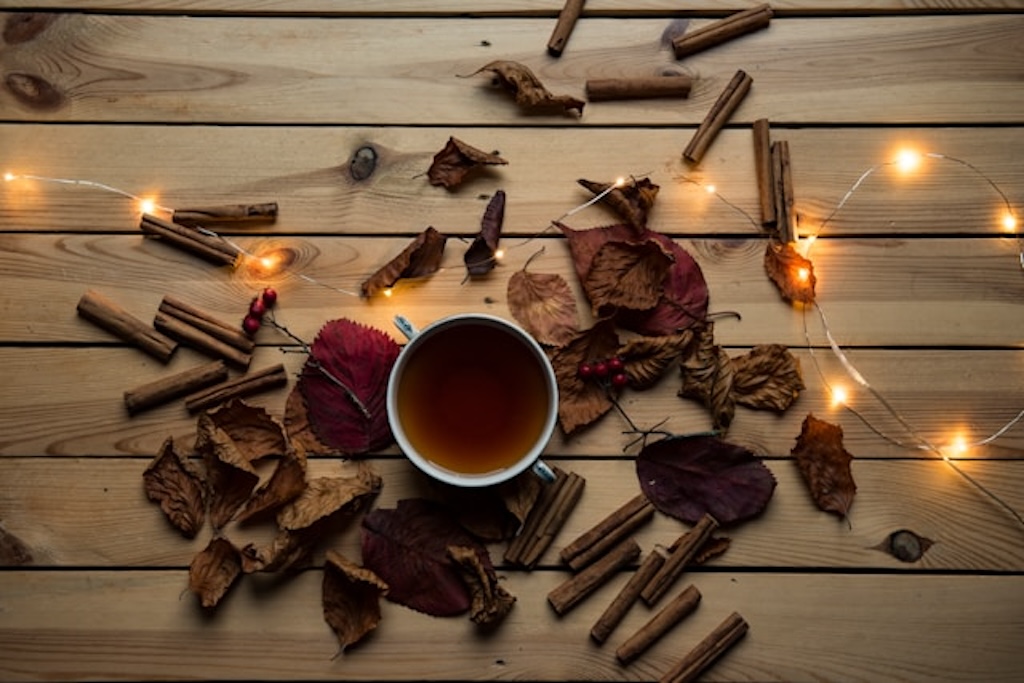Cinnamon is one of the most unique spices, created from the inner bark of the Cinnamomum tree. Known for its warm and woody flavor, cinnamon has many roles in cooking and baking. But cinnamon’s unique flavor is also perfect in cinnamon tea, creating a light, natural sweetness made by steeping the bark of a cinnamon tree into boiling water.
Not only is cinnamon tea deliciously cozy, but it’s also easy to make and contains many antioxidants for a health boost, too. Below, discover everything you wanted to know (and more) about cinnamon tea and how to make it.
What is cinnamon tea?

Cinnamon tea is known as an herbal tisane since it cannot be classified as a true tea (cinnamon bark is used and not any tea leaves). When making cinnamon tea by infusing cinnamon bark into boiling water, this tea is naturally caffeine-free and has a very slight bit of natural sweetness. Pure cinnamon tea may be difficult to find, but it’s super simple to make at home.
In stores, you’ll likely see a variety of different cinnamon-flavored teas that use other teas as a base and add cinnamon flavor. For example, Bigelow Tea’s “Cinnamon Stick” variety is actually a black tea that has an added cinnamon flavor. This type of tea is a great option if you’re looking to get the delicious notes of cinnamon but want a tea that contains caffeine for an energy boost.
Most people traditionally enjoy cinnamon tea as a warm beverage, but it can also enjoyed as a cold, over ice such as in this Sweet Iced Cinnamon Tea recipe.
Why you should drink cinnamon tea
It’s no secret that cinnamon offers many health benefits, most commonly known for containing antioxidants that could help fight free radical damage in the body. Consuming cinnamon tea may play a helpful role in fighting chronic diseases such as cancer and heart disease. Drinking one or two cups of cinnamon tea a day is a great habit to work into your health and wellness routine!
Cinnamon also has a positive effect on lowering blood sugar, which is an important component of maintaining a healthy weight and preventing Type 2 Diabetes. Several studies suggest that cinnamon can lower blood glucose levels and may be a helpful, holistic tool for those who have insulin resistance or other metabolic issues. Cinnamon tea can also help soothe a sore throat if you’re sick.
How to make cinnamon tea

Making cinnamon tea requires only two ingredients: your cinnamon sticks of choice and water. In only three simple steps, you can enjoy sipping on homemade, natural cinnamon tea. Here’s how:
Ingredients
- 2 cinnamon sticks (or more if you prefer a stronger, more intense flavor)
- 2 cups of water
Method
- Combine both cinnamon sticks and water in a small saucepan. Bring the water to a boil, then reduce to a low simmer for about 15 minutes. The simmering process is what gives your tea that rich cinnamon-infused flavor you’re looking for.
- Remove large cinnamon sticks from the water with a fork or spoon. Then, pour the tea through a strainer to catch any remaining pieces that may have broken off.
- Enjoy your cinnamon tea.
Note: Cinnamon tea can also be served with lemon juice or ginger to enhance the flavor. If you’re looking for a sweeter taste, honey or sugar can also be added for more of a treat. If you have any remaining tea from your batch, it can be stored in an airtight container in the fridge for up to three days.
Type of cinnamon to use
Thought all cinnamon was the same? There are four different types of cinnamon you may find in stores, each of which has a slightly different flavor profile. The two most common types of cinnamon are Cassia and Ceylon cinnamon. Many people enjoy using Ceylon cinnamon when making cinnamon tea because it is known to have a mild, delicate flavor. When making cinnamon tea, using the full cinnamon stick as opposed to ground cinnamon powder will create a more natural, infused taste.
When to enjoy cinnamon tea
Since cinnamon tea is naturally caffeine-free, it’s the perfect drink to enjoy after dinner or before bedtime to help you relax. However, it can be consumed at any point during the day. Some people who wish to maximize the blood-sugar-lowering effects of cinnamon tea may wish to consume it around mealtime to help stabilize spikes in blood glucose.




